Increasing cell culture density during a developmental window prevents fated rod precursors derailment toward hybrid rod-glia cells
- PMID: 37055439
- PMCID: PMC10101963
- DOI: 10.1038/s41598-023-32571-y
Increasing cell culture density during a developmental window prevents fated rod precursors derailment toward hybrid rod-glia cells
Abstract
In proliferating multipotent retinal progenitors, transcription factors dynamics set the fate of postmitotic daughter cells, but postmitotic cell fate plasticity driven by extrinsic factors remains controversial. Transcriptome analysis reveals the concurrent expression by postmitotic rod precursors of genes critical for the Müller glia cell fate, which are rarely generated from terminally-dividing progenitors as a pair with rod precursors. By combining gene expression and functional characterisation in single cultured rod precursors, we identified a time-restricted window where increasing cell culture density switches off the expression of genes critical for Müller glial cells. Intriguingly, rod precursors in low cell culture density maintain the expression of genes of rod and glial cell fate and develop a mixed rod/Muller glial cells electrophysiological fingerprint, revealing rods derailment toward a hybrid rod-glial phenotype. The notion of cell culture density as an extrinsic factor critical for preventing rod-fated cells diversion toward a hybrid cell state may explain the occurrence of hybrid rod/MG cells in the adult retina and provide a strategy to improve engraftment yield in regenerative approaches to retinal degenerative disease by stabilising the fate of grafted rod precursors.
© 2023. The Author(s).
Conflict of interest statement
The authors declare no competing interests.
Figures
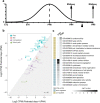
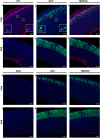
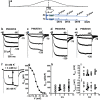
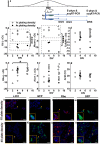
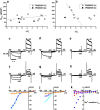
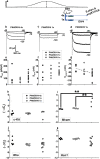

Similar articles
-
Late-stage neuronal progenitors in the retina are radial Müller glia that function as retinal stem cells.J Neurosci. 2007 Jun 27;27(26):7028-40. doi: 10.1523/JNEUROSCI.1624-07.2007. J Neurosci. 2007. PMID: 17596452 Free PMC article.
-
β-catenin/Wnt signaling controls progenitor fate in the developing and regenerating zebrafish retina.Neural Dev. 2012 Aug 24;7:30. doi: 10.1186/1749-8104-7-30. Neural Dev. 2012. PMID: 22920725 Free PMC article.
-
Postmitotic cells fated to become rod photoreceptors can be respecified by CNTF treatment of the retina.Development. 1997 Mar;124(5):1055-67. doi: 10.1242/dev.124.5.1055. Development. 1997. PMID: 9056780
-
Müller glia: Stem cells for generation and regeneration of retinal neurons in teleost fish.Prog Retin Eye Res. 2014 May;40:94-123. doi: 10.1016/j.preteyeres.2013.12.007. Epub 2014 Jan 8. Prog Retin Eye Res. 2014. PMID: 24412518 Free PMC article. Review.
-
Retinal regeneration in teleost fish.Ciba Found Symp. 1991;160:171-86; discussion 186-91. doi: 10.1002/9780470514122.ch9. Ciba Found Symp. 1991. PMID: 1752162 Review.
Cited by
-
Retinoid Synthesis Regulation by Retinal Cells in Health and Disease.Cells. 2024 May 18;13(10):871. doi: 10.3390/cells13100871. Cells. 2024. PMID: 38786093 Free PMC article.
References
Publication types
MeSH terms
Substances
Associated data
LinkOut - more resources
Full Text Sources
Molecular Biology Databases

